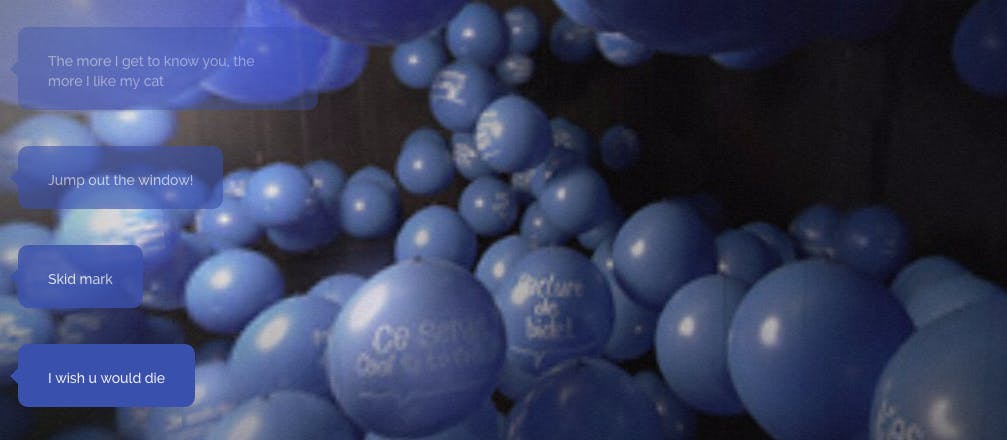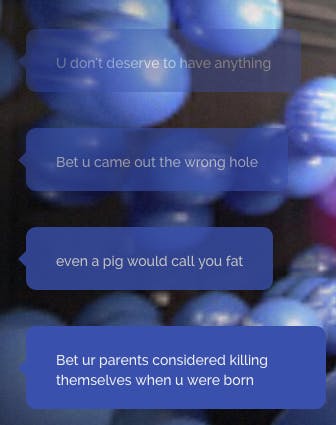This article contains mentions of cyberbullying and suicide.
One of the most difficult aspects of being cyberbullied is that many people are still reluctant to believe it’s a problem. The interactive website This Was Louise’s Phone hopes to show users just how real cyberbullying is.
The website is built around the phone contents of a 16-year-old Belgian girl named Louise, who committed suicide in 2014 after being subjected to an onslaught of hateful and threatening text messages.
“In Belgium, there have been several cases of suicides due to cyberbullying [in] the last year,” Ramin Afshar, one of the project’s organizers, told the Daily Dot. “But we couldn’t just randomly contact the parents of the victims to work on the project due to the sensitive nature of the project and out of respect for the parents.”
By working with police, organizers were put in touch with Louise’s dad, who helped them to build an installation of 600 balloons, each with a text or message Louise received on her phone. The installation was then turned into an interactive website (originally published in French), where users can click around to see just what cyberbullying looks like and hear narration from Louise’s dad about his daughter’s struggles.
The messages are often difficult to look at.
Afshar hopes the site illuminates just how hurtful cyberbullying can be and how unhelpful it is to tell victims to just “turn off” their phones or computers.
“The internet has become an integral part of our lives and it’s not something that you can turn off or hide away from,” he said. “With the scale of the installation, we wanted to show that it’s not just ONE comment but there are hundreds of comments that get sent and the effect of constantly being bombarded with hateful messages on someone’s well-being is real.”
Cyberbullying has been declared a public health problem, with 7-15 percent of young people saying they’ve been bullied online (though other statistics have it as high as 50 percent).
Bullying is not new, and because of that, it’s easy to dismiss it as just something all kids experience and that they need to “toughen up.” But the internet makes it so that bullying ceases to be something that just happens in school hallways, and the intimacy of direct messages—where you can say anything free from supervision—means bullies have the ability to be crueler than ever.
It’s easy to ignore it, to think it’s just a joke, and to say “don’t feed the trolls” and move on. But hearing messages like that day in and day out has already taken its toll on too many people. Cyberbullying is very real, but hopefully more people will learn how preventable it is.


